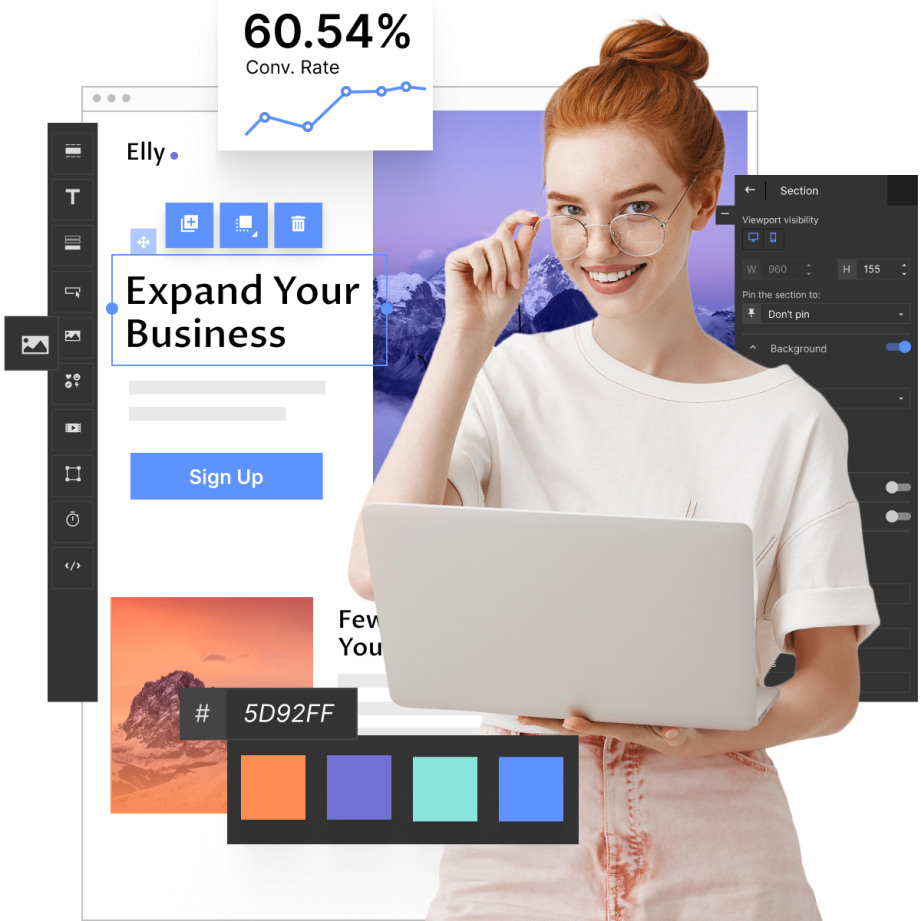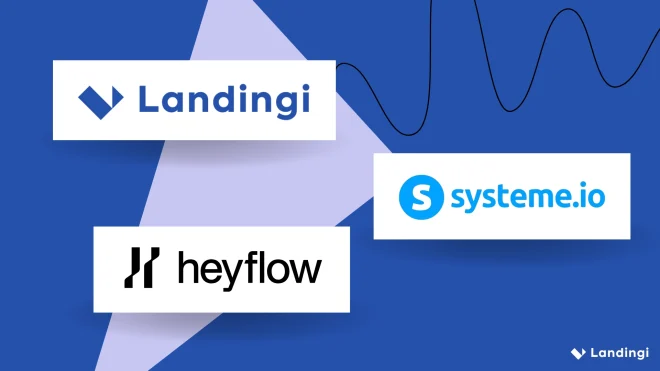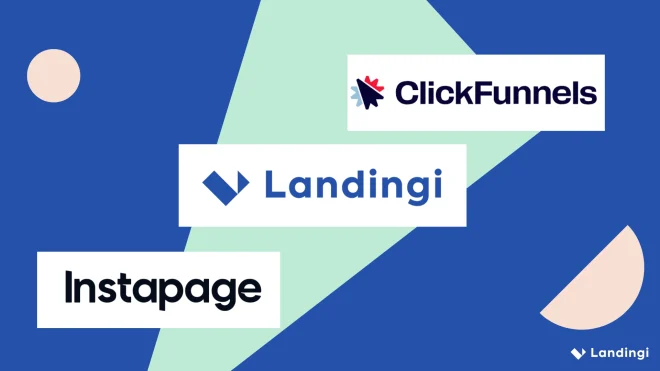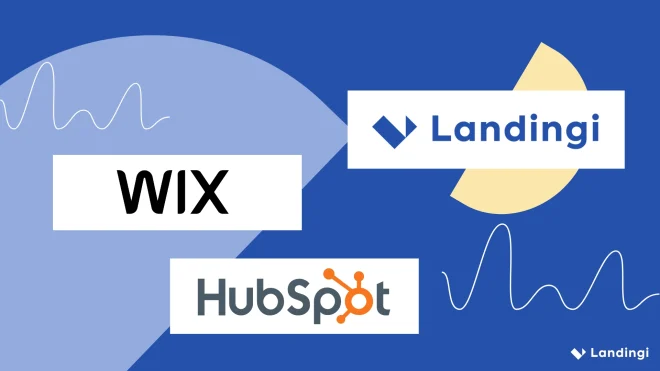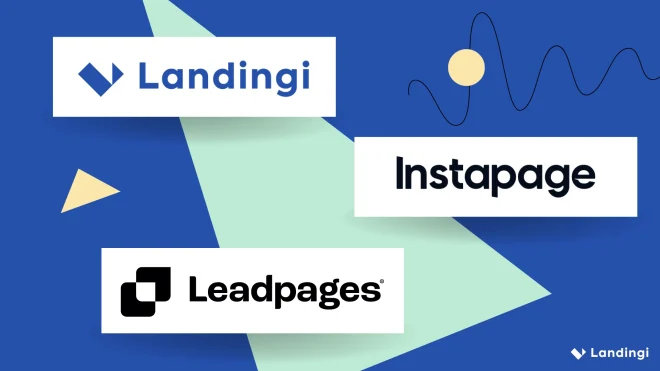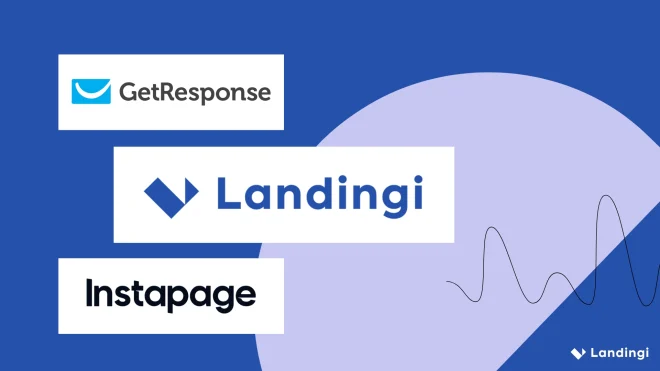Choosing between Heyflow, Systeme.io, and Landingi isn’t easy – each claims to simplify campaign building and boost conversions, yet they serve very different needs.
Heyflow focuses on interactive funnels and dynamic forms, Systeme.io combines multiple marketing tools in one affordable suite, while Landingi offers complete design freedom and scalability for professional teams.
This comparison explains the real differences, strengths, and drawbacks of each platform – helping you decide which one fits your goals, whether you run an agency, a SaaS brand, or an enterprise marketing team.
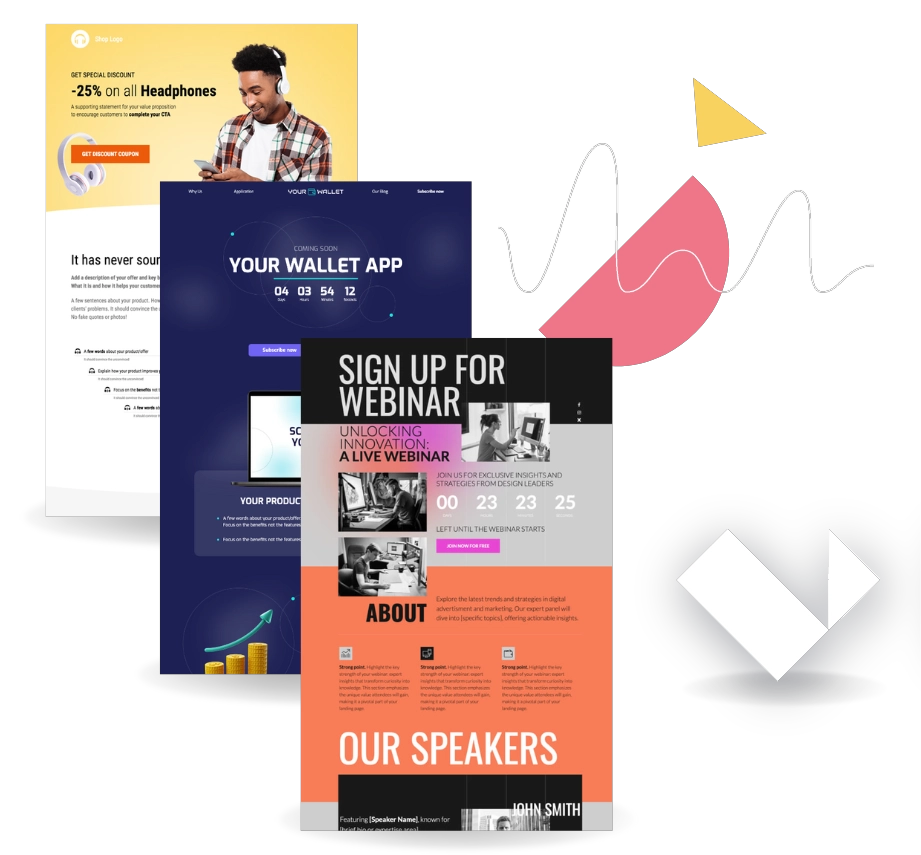
Key Differences Between Heyflow, Systeme.io, and Landingi
The primary differences between Heyflow, Systeme.io, and Landingi lie in their purposes, customization depth, and scalability. Heyflow excels at interactive lead funnels, Systeme.io provides an affordable all-in-one marketing system, and Landingi offers enterprise-grade flexibility for building, automating, and scaling landing pages across campaigns and clients.
Below is a summary of how the three tools compare across their core strengths:
| Platform | Pros | Cons | Pricing | Ease of Use | Notable Clients |
| Heyflow | Interactive, no-code builder; strong analytics; modern UI; great for agencies | Expensive bundles; limited customization; weak WordPress SEO | From €19/mo (+paid bundles) | Moderate (not pixel-perfect) | AXA, Fortune 500 |
| Systeme.io | All-in-one marketing suite; free plan; simple to use; solid automations | Limited design flexibility; basic analytics | Free–$97/mo | Very easy | 8,000+ SMBs |
| Landingi | Pixel-perfect editor; automation; enterprise features; 400+ templates | Manual mobile editing; premium add-ons | Free–$57/mo (Enterprise $1150/mo) | Moderate (powerful) | Booksy, PayU, Nationale-Nederlanden |
1. Heyflow
Heyflow is a no-code platform for building interactive lead funnels, quizzes, and survey-style journeys that feel more engaging than traditional forms. Its focus on user interaction makes it popular among teams that want higher-quality leads or need to qualify users before handing them to sales.
Because of this niche, Heyflow is often chosen by brands that rely heavily on conversion-focused flows rather than full landing pages.

Pricing:
Heyflow runs on a pay-per-lead model.
Plans start at €19/month (Starter) for 50 responses and 5 flows. Growth (€68) and Scale (€199) expand limits up to 1000 responses/month. Extra “bundles” – such as A/B testing, design control, or integrations – cost €40–€90 each, meaning a fully equipped setup can easily exceed €350/month. Enterprise pricing is custom.
Key Features:
Heyflow specializes in interactive funnels – quizzes, calculators, and conversational forms. It includes:
- 40+ prebuilt blocks and conditional logic
- Payment, signature, and calendar integrations
- Drop-off analytics and A/B testing
- Dynamic content personalization
- Basic templates (≈43) and mobile-first setup
Ratings:
- G2: 4.4/5
- Capterra: 4.7/5
- Trustpilot: 2.6/5
Cons
Users often mention high costs and limited customization freedom. Reviews highlight issues with iframe embedding lowering SEO scores, manual styling, and complex configuration for large projects. There’s also a lack of deep WordPress integration and dependence on paid bundles for key features.
Some user reviews point to serious security concerns. For example, they report that Heyflow portals were blacklisted by services like Sucuri and PhishTank. Customers also noted that support declined refund requests, even when client data might have been at risk. These issues raise important questions about the platform’s reliability and safety for client-facing projects.
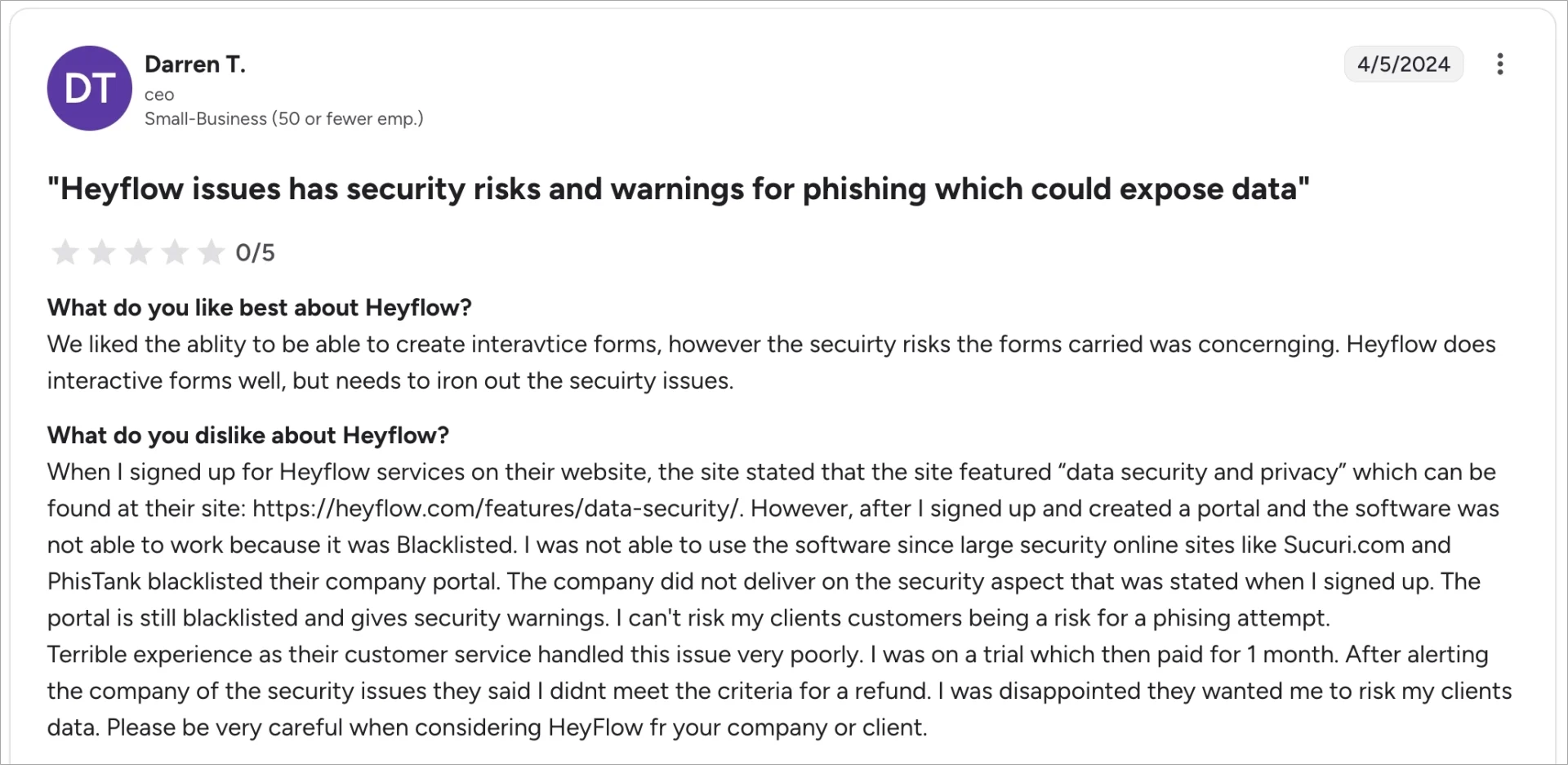
In my view, Heyflow’s pricing model doesn’t scale well – once you add bundles, monthly costs can exceed $300–$500 for teams.
Pros
Users praise its intuitive builder, interactive experience, and conversion rates higher than Typeform. The builder is stable, supports multi-step logic, and looks modern. Support gets positive mentions for quick, hands-on help.
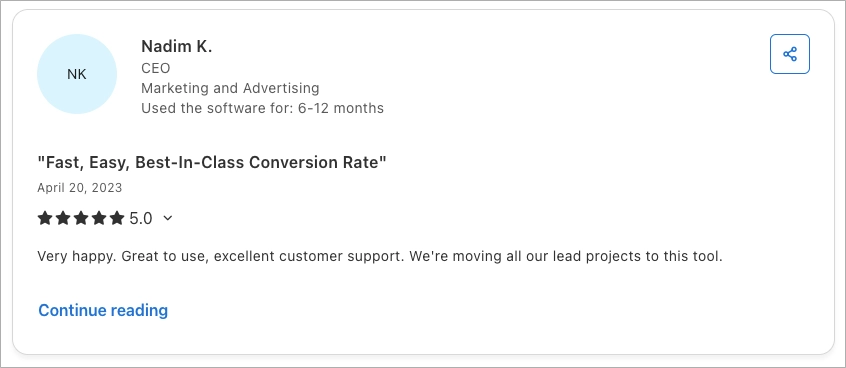
In my opinion, Heyflow stands out for user engagement – if you’re focused on micro-conversions, it’s a strong option.
Best for
Best for marketing agencies and B2C lead-generation teams that need highly engaging multi-step experiences rather than traditional landing pages.
2. Systeme.io
Systeme.io is an affordable all-in-one marketing platform that combines landing pages, email automation, funnels, courses, and payments into a single workspace. It’s built to help small businesses launch quickly without juggling multiple tools or complex integrations.
Its simplicity and bundled features make it appealing for users who want an end-to-end system rather than a highly customizable design environment.
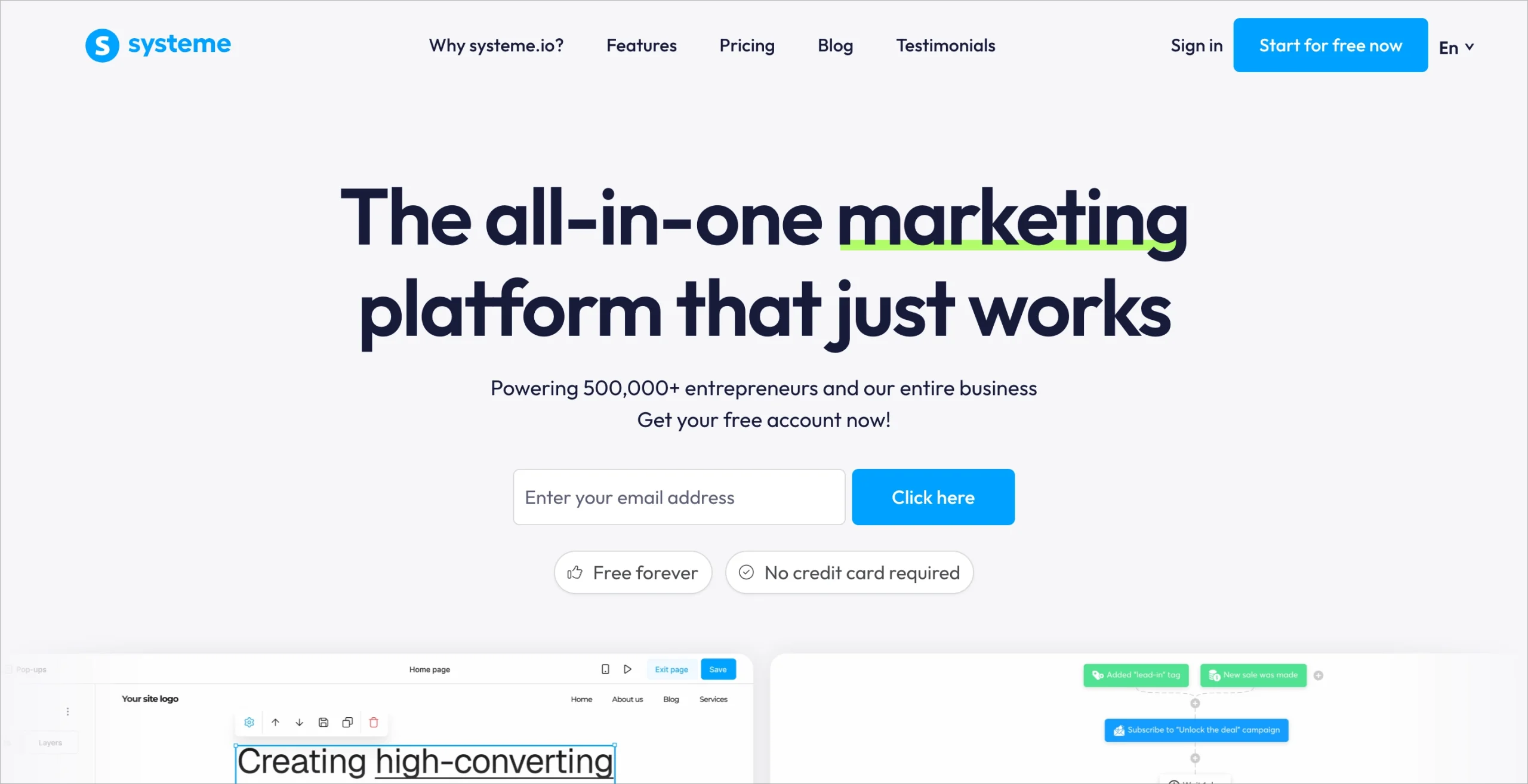
Pricing:
Systeme.io offers one of the most transparent pricing models. Free plan, then Startup $17/mo, Webinar $47/mo, Unlimited $97/mo. All plans include hosting, SSL, email sending, and no transaction fees.
Key Features:
Systeme.io provides an all-in-one marketing suite covering:
- Landing page and funnel builder
- Email automation
- Course hosting and memberships
- Affiliate management
- Payment integrations (Stripe, PayPal, Apple Pay)
- Blog and pop-ups
- Webinars and workflow automation
Ratings:
- G2: 4.8/5
- Capterra: 4.8/5
- Trustpilot: 4.8/5
Cons
Common complaints include limited design freedom, basic mobile editing, and weak analytics compared to advanced tools. Reviews also mention slower support on weekends and inconsistent quality. Some users additionally report significant delays in promised migrations, describing cases where projects remained unfinished for months while support continued to charge for the service, which raises concerns for teams relying on timely onboarding.

Personally, I find Systeme.io ideal for launching fast – but its design constraints may frustrate users who need branded, pixel-perfect visuals.
Pros
Users love its simplicity, speed, and free plan. It handles funnels, emails, and payments without third-party tools. Support is described as responsive and “human.”
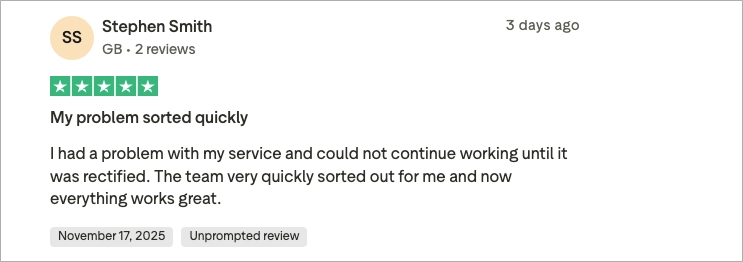
From my perspective, Systeme.io delivers unmatched value for the price – it’s genuinely a “business-in-a-box” for small players.
Best for
Best for solopreneurs, small businesses, and online course creators who want an affordable, single platform for their entire marketing stack.
3. Landingi
Landingi is a dedicated landing page platform built for marketers who manage multiple campaigns and need full control over every element on the page.
Unlike all-in-one tools or form-focused builders, Landingi concentrates its entire product on helping teams design, launch, test, and scale landing pages at volume. It gives users the freedom to build any layout, automate repetitive work, and maintain consistent branding across dozens or even hundreds of assets – all without depending on developers.
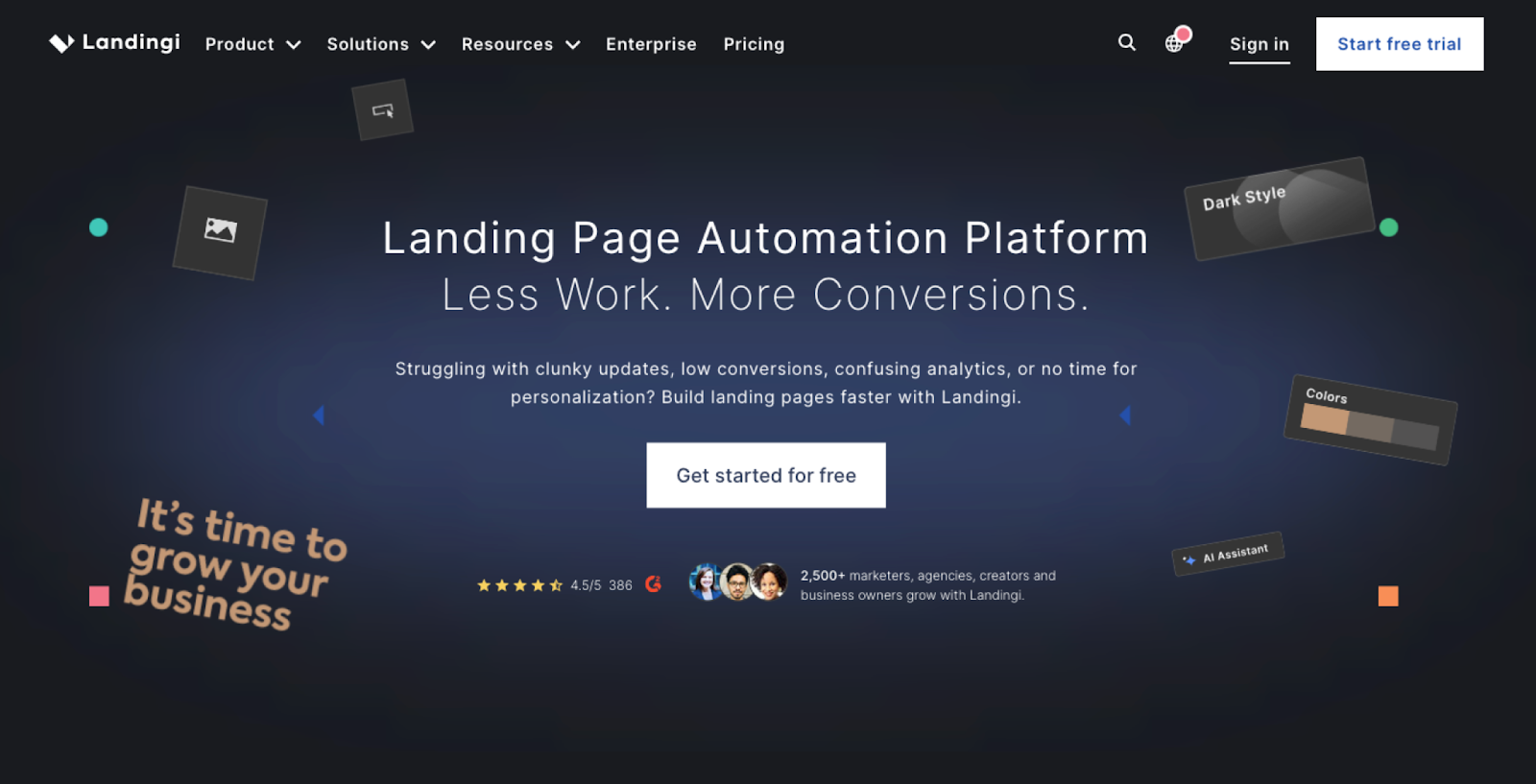
Pricing:
Landingi offers four plans:
- Free – $0/month (5 pages, 100 visits, 100 conversions)
- Lite – $24/month (10 pages, unlimited conversions, 5,000 visits)
Professional – $57/month (unlimited pages, 50,000 visits, advanced integrations) - Enterprise – $1,150/month (custom infrastructure, audit logs, SSO, unlimited resources)
All include a 14-day free trial and optional annual discounts.
Design and deploy high-converting landing pages with total creative freedom.
Key Features:
Landingi combines creative freedom and enterprise scalability:
- Pixel-perfect drag-and-drop builder with 400+ templates
- EventTracker for detailed user analytics
- Smart Sections and AI Assistant for fast editing
- A/B/x testing with multiple variants
- 170+ native and Zapier integrations (CRM, ads, analytics)
- Multi-language support, subaccounts, and collaboration tools
- Hosting, SSL, and WordPress plugin included
Ratings:
- G2: 4.5/5
- Capterra: 4.8/5
- Trustpilot: 4.4/5
Cons
Users mention that mobile views require manual adjustments and that the interface can be complex at first. Some note occasional lag in large projects and support limited to business hours.

From my perspective, these trade-offs are minor for what you gain – deep customization and control.
Pros
Users highlight full layout freedom, integration depth, and excellent performance for high-volume teams. Landingi supports multi-user access, API automation, and enterprise-grade hosting.

I find Landingi the most scalable option: flexible enough for design teams, yet structured for agencies handling dozens of client accounts.
Best for
Landingi is best for marketing teams, agencies, and enterprises managing multiple landing pages, clients, and campaigns at scale.
Pricing Comparison: Heyflow vs. Systeme.io vs. Landingi
Pricing differences between Heyflow, Systeme.io, and Landingi are substantial. Heyflow charges per response and bundles features as costly add-ons. Systeme.io offers an affordable flat-rate subscription with a free tier. Landingi also provides a full Free plan, while its paid options sit in between – offering scalable, professional features that balance price with advanced functionality.
The table below summarizes monthly and annual options, highlighting included tools and limitations for each platform.
| Platform | Free Plan | Paid Plans (Monthly) | Annual Option | Key Inclusions | Limitations |
| Heyflow | 14-day trial only | €19 (Starter), €68 (Growth), €199 (Scale), Enterprise (custom) | 10–15% discount | Drag-and-drop builder, analytics, conditional logic, payments | Pay-per-response model, limited templates, bundles (€40–90 each) |
| Systeme.io | Yes | $17 (Startup), $47 (Webinar), $97 (Unlimited) | ~20% discount | Landing pages, funnels, email automation, courses, affiliate mgmt | Limited design flexibility, simple analytics |
| Landingi | Yes | $24 (Lite), $57 (Professional), $1,150 (Enterprise) | 2 months free on annual billing | Pixel-perfect builder, 400+ templates, A/B/x testing, EventTracker, integrations | Manual mobile editing, complex UI for beginners |
Landingi’s Professional plan ($57/month) is particularly competitive – offering unlimited pages, integrations, and advanced analytics for a fraction of Heyflow’s cost and with far more design flexibility than Systeme.io.
Comparison by Use Case
Each platform performs differently depending on your goals – whether it’s capturing leads, selling products, promoting events, or testing pages.
Below, each use case shows which tool performs best and why.
Lead Generation Capabilities
Lead generation is where Heyflow shines – interactive quizzes and conditional flows engage users far more than static forms. Systeme.io handles form-based lead capture well, integrated directly with its built-in CRM and email automation.
Landingi combines advanced form customization, pop-ups, and smart sections for personalization across campaigns. Landingi’s EventTracker also shows exactly how users interact with each form field – data agencies love when optimizing conversions.
See how Landingi blends CRM-ready forms with behavioral data to boost your lead quality.
Product Sales
Product sales are best handled by Systeme.io, which includes checkout, upsells, and digital product delivery. Heyflow supports Stripe payments via an add-on, while Landingi connects with e-commerce tools (PayU, Stripe, PayPal) through integrations or its optional E-commerce Hub.
Event Promotion
Event promotion is smoothest in Landingi thanks to customizable registration forms and scheduling integrations. The platform streamlines event pages with templates, dynamic text, and autoresponders – ideal for managing recurring events or campaigns.
Systeme.io supports webinars and online events natively, while Heyflow can simulate event registration via interactive funnels – though without built-in event modules.
Testing and Optimization
Testing is most advanced in Landingi, offering A/B/x server-side testing and EventTracker to analyze user behavior in depth. Heyflow provides basic A/B testing (two variants) and drop-off analytics, while Systeme.io supports simple funnel split tests but lacks granular behavior data.
Unleash the full power of A/B/x testing with Landingi’s precision tools.
Core Features Compared
Each builder offers distinct tools that shape the user experience. Below, you’ll find how they compare in daily workflow and functionality. These core features determine how efficiently you can design, test, and manage campaigns at scale.
Drag-and-drop Builder
All three platforms offer drag-and-drop editors, but Landingi and Heyflow differ in control.
Heyflow uses structured blocks (no pixel-perfect freedom), Systeme.io offers simplicity for speed, and Landingi is a true pixel-perfect editor, letting users freely place and layer elements for precise design.

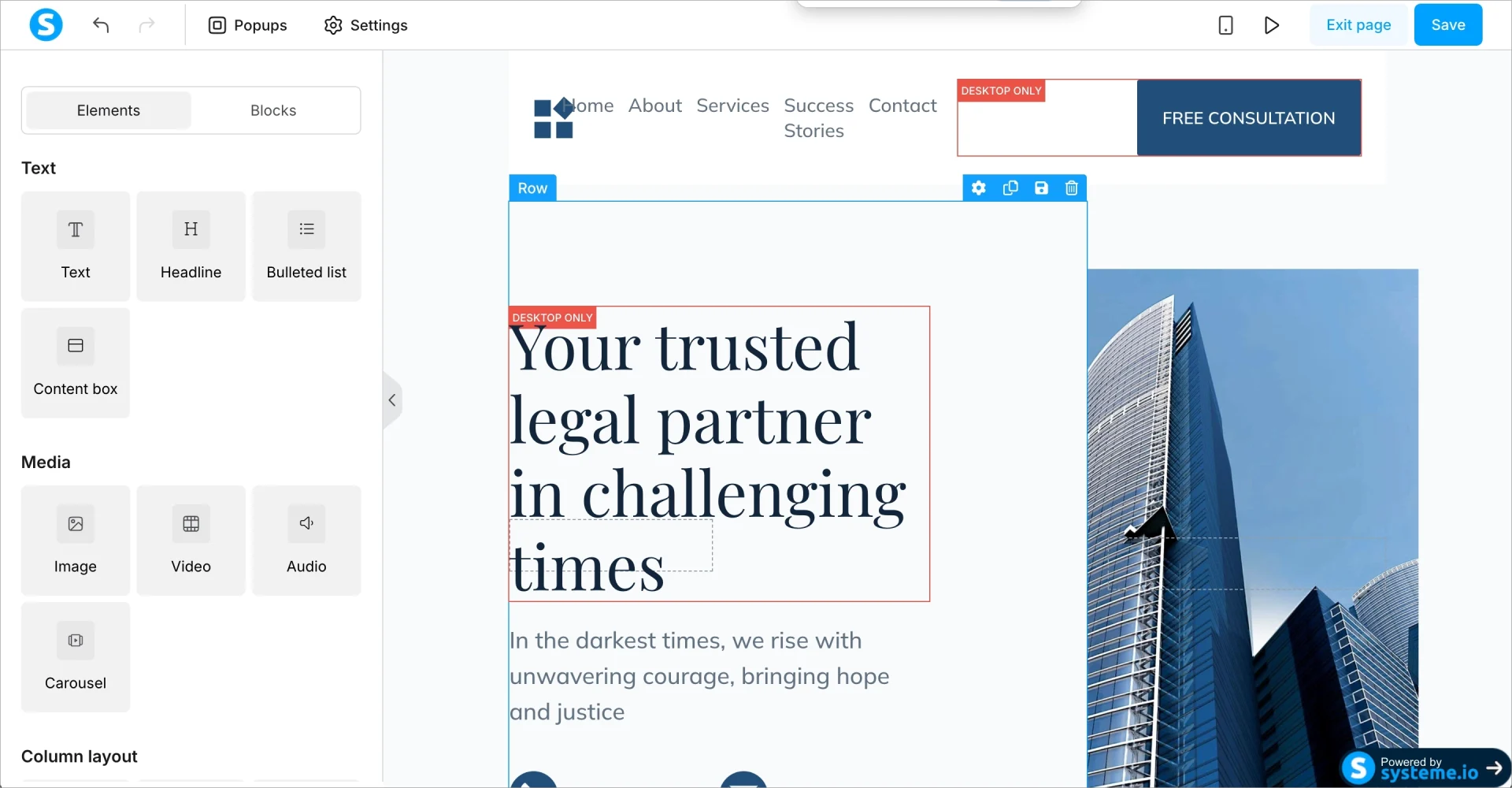

Responsive Design
Each tool outputs mobile-responsive pages, but Landingi allows manual adjustment of mobile elements for accurate rendering. Systeme.io lets you hide/show elements per device, while Heyflow optimizes automatically for mobile-first but restricts element positioning.
Pre-built Templates
Landingi clearly leads here with 400+ professional templates across industries. Systeme.io offers functional but minimalist designs for funnels and opt-ins. Heyflow has only about 40 templates in total, mostly simple and quiz-oriented.



Forms and Pop-ups
Heyflow specializes in interactive forms with conditional logic and branching questions. Landingi supports full form customization, a variety of field types, and multi-step forms, also allowing for the creation of pop-ups with forms. Systeme.io offers simple opt-in forms connected to email automation.
Integrations
Landingi wins in integration depth – over 170 native, compatible, and Zapier-based options (HubSpot, Google Analytics, Mailchimp, Meta Ads, CRM tools, webhooks). Heyflow offers around 20 direct integrations and relies on GTM/GA4 for advanced tracking. Systeme.io focuses on its internal ecosystem with limited external connectors.
A/B Testing
Landingi enables advanced server-side A/B/x testing with multiple versions and real-time analytics. Heyflow supports two-variant A/B tests via its Insights bundle. Systeme.io includes basic split tests at funnel level – sufficient for small campaigns.
Analytics
Landingi’s EventTracker provides granular behavioral data (clicks, scrolls, video plays, dwell time). Heyflow shows drop-offs and conversions but lacks event-level detail. Systeme.io gives simple metrics – visits, opt-ins, and sales – enough for beginners but limited for scaling teams.
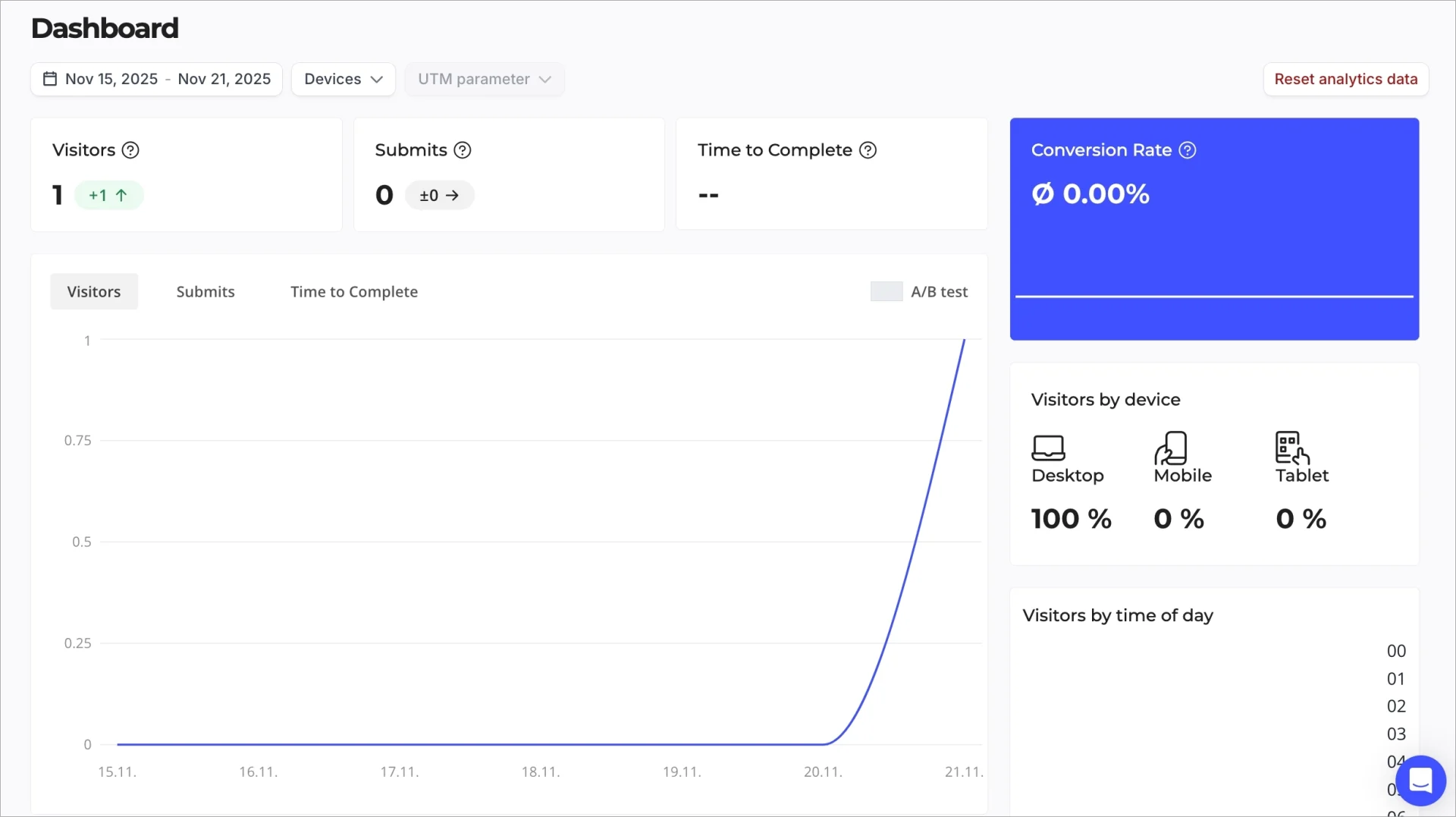
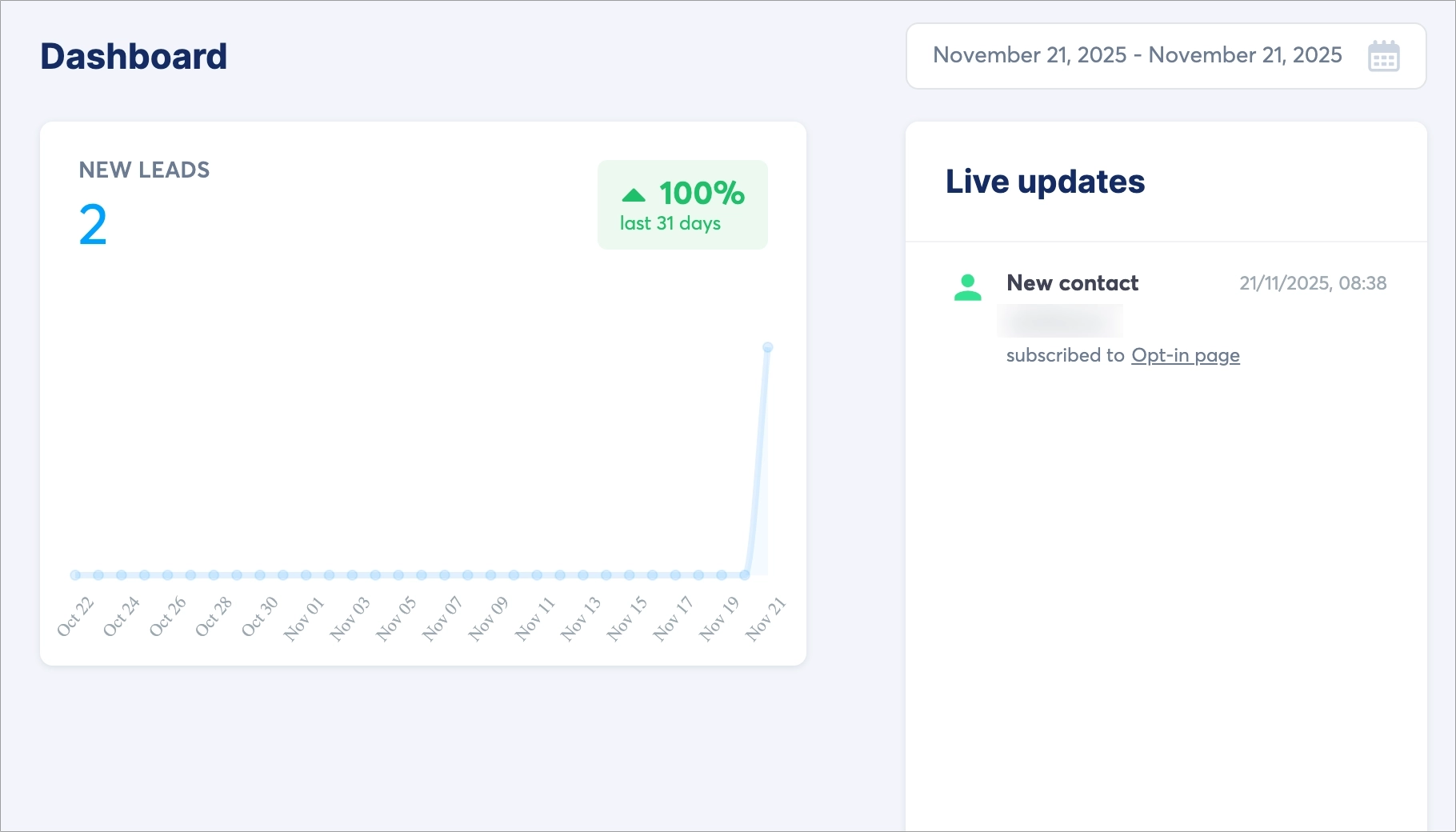

Landingi’s EventTracker provides in-depth insights into user behavior:


Customization and Scalability
Scalability determines how far your campaigns can grow as your organization expands. It also shows which platform can support more users, more pages, and more complex workflows as your needs evolve.
Can you fully customize templates, colors, and layout?
Full customization is possible only in Landingi, with pixel-perfect control and editable CSS for every element. Heyflow restricts layout movement but allows style adjustments. Systeme.io offers limited front-end design – good for function, less for brand precision.
Does the tool support custom code (HTML/CSS/JS) if needed?
Landingi and Heyflow both allow inserting custom scripts or HTML (Heyflow via €90 Coding Bundle). Systeme.io does not provide native access to page source code but supports basic custom scripts via global settings.
Is it scalable for multiple campaigns, teams, or clients?
Scalability is Landingi’s strongest advantage – with multi-user accounts, subaccounts, permissions, and enterprise infrastructure. Heyflow offers collaborator seats at extra cost (€35/account/month). Systeme.io supports unlimited projects but lacks structured team management.

FAQ about Heyflow vs. Systeme.io vs. Landingi
Here are the most common questions about Heyflow, Systeme.io, and Landingi to help you understand how each platform works and where they differ.
What is Heyflow?
Heyflow is a no-code builder for interactive funnels and forms. It helps marketers create engaging, quiz-like user journeys – ideal for lead qualification or conversion-focused campaigns.
It’s praised for its intuitive interface and analytics but criticized for its high costs, limited design flexibility, and reliance on bundles for key features. In short, it’s a premium tool for agencies that need interactivity, not necessarily scalability.
What is Systeme.io?
Systeme.io is an affordable all-in-one marketing platform that combines landing pages, email automation, CRM, courses, and checkout systems under one roof.
It’s ideal for freelancers and small businesses that want a simple setup and quick results without connecting multiple tools. However, its design options are limited, and it lacks enterprise-grade customization or collaboration features.
What is Landingi?
Landingi is a professional landing page platform built for teams, agencies, and enterprises. It gives marketers complete design freedom, automation tools, and analytics to optimize campaigns at scale.
Unlike Heyflow or Systeme.io, Landingi was built from the ground up for scalability, collaboration, and control – from pixel-perfect design to smart sections, A/B/x testing, and subaccounts.
Choose the Right Landing Page Tool and Boost Your Campaign Conversion Rates
Choosing between Heyflow, Systeme.io, and Landingi depends on your goals – but if you’re running multiple campaigns, managing teams, or scaling enterprise marketing, the right choice is Landingi.
Landingi offers creative freedom and technical depth rarely seen together. You can design pages down to the pixel, automate lead management, and analyze every interaction – all while maintaining performance, security, and collaboration features fit for enterprise standards.
Unlike Heyflow, it doesn’t charge extra for basic features, such as custom code. And unlike Systeme.io, it gives teams true control over design, data, and workflow scalability.
If your goal is to build faster, test smarter, and scale campaigns confidently, Landingi is the platform built for you.
Try Landingi for free or book a demo to see how it helps agencies and marketing teams create landing pages that convert – efficiently and at scale.
